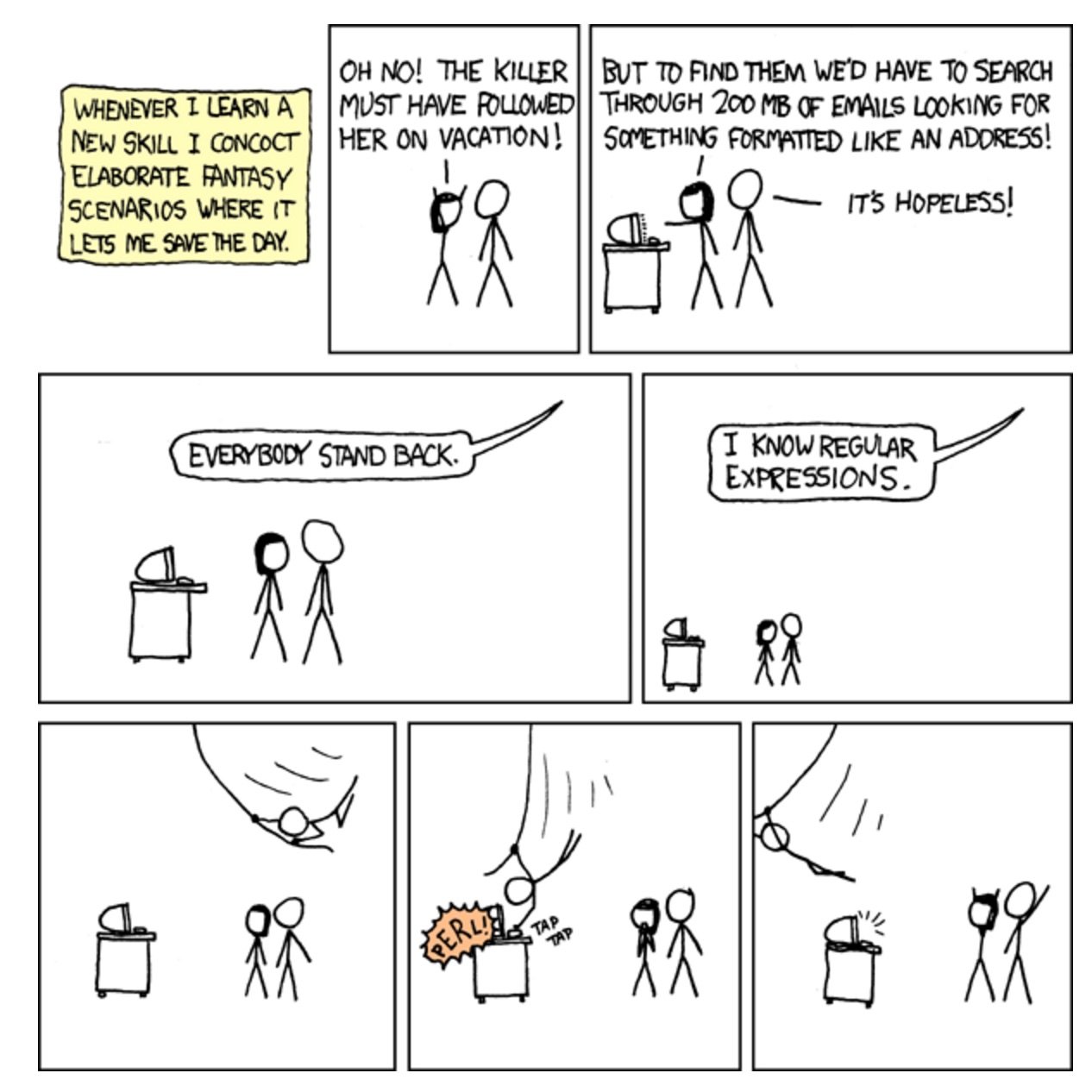Acknowledgements
This article is a rewrite of the work of Mark Engelberg in his automata repository - with a tweak:
All the code snippets of this page are live and interactive powered by the klipse plugin:
- Live: The code is executed in your browser
- Interactive: You can modify the code and it is evaluated as you type
In his repo, Mark shows how to use regular expressions and automatas to solve programming riddles. In this article, we will focus on regular expressions.

Prelude
For the purposes of this code, it is useful to replace Clojure’s max / max-key
with versions that return nil when passed no inputs to maximize.
Also, we are going to use clojure.combinatorics by Mark Engelberg for generating cartesian products of sequences:
(ns my.combinatorics
(:require [clojure.math.combinatorics :refer [cartesian-product]]))
(defn max ([] nil) ([& s] (apply clojure.core/max s)))
(defn max-key ([k] nil) ([k & s] (apply clojure.core/max-key k s)))
The classic interview problem - maximum segment sum
A popular problem is to find an O(n) algorithm for computing the maximum sum
achievable by adding up some contiguous subsequence (aka segment) of
a sequence of numbers (typical input is a mix of positive and negative integers).
For example,(maximum-segment-sum [-1 2 3 -4 5 -8 4]) should return 6 because 2+3+-4+5 is 6.
If you’ve never seen this problem before, I encourage you to go try to solve it right now. It’s a fun problem.
The trick is to keep a running sum as you traverse the sequence, never letting the running sum dip below 0. This has the effect of ignoring negative numbers that make things “too negative”. Return the highest sum you saw.
This strategy can be implemented concisely in Clojure:
(defn maximum-segment-sum [s]
(apply max (reductions (comp #(max 0 %) +) 0 s)))
Let’s the results of the reductions with [-1 2 3 -4 5 -8 4]:
(reductions (comp #(max 0 %) +) 0 [-1 2 3 -4 5 -8 4])
The max is 6.
A harder problem - maximum non-segment sum
But we’re going to do something harder, we’re looking for the maximum sum among subsequences that are not a continguous segment.
For example, (maximum-non-segment-sum [-1 4 5 -3 -4]) should be 5
because 4+5+-4 = 5, and those three numbers don’t form a segment.
We can’t choose just 4, or just 5, or 4+5, because singletons and adjacent pairs
are considered a segment. We can’t even choose the “empty” subsequence with a
value of 0, because that is also considered a segment.
We could have chosen things like -1+5 or 5+-4 or 4+-3, but they happen to be not as good.
Unfortunately, there’s no clever trick for solving this problem. We’re going to have to look for a more principled approach.
(If you don’t believe me, go spend a while trying to solve it, just so you can appreciate how hard this problem really is.)
Brute force with Regular expressions
Our strategy is going to be brute force:
(defn maximum-non-segment-sum [s]
(->> (all-non-segment-subsequences s)
(map (partial apply +))
(apply max)))
But how to write all-non-segment-subsequences?
First key insight is that you can represent a subsequence by applying a bitmask
of 0s and 1s to the sequence.
(defn apply-bitmask
"Takes a sequence and a bitmask, and returns the correpsonding subsequence"
[s bitmask]
(for [[item bit] (map vector s bitmask) :when (= bit 1)] item))
Let’s see how it works:
(apply-bitmask [1 2 3 4 5] [0 1 1 0 1])
We can describe the satisfactory bitmasks with a regex
(def non-segment-regex #"0*1+0+1(0|1)*")
What this regex says is that a non segment bitmask is a sequence of:
- 0 or
0s - 1 or more
1s - 1 or more
0s - a single
1 0s or1s freely
And indeed, this regex recognizes whether a bitmask represents a non-segment
(re-matches non-segment-regex "011010" )
or not
(re-matches non-segment-regex "011110")
Now, let’s make a function that receives a identifies non-segment bitmasks:
(defn non-segment-bitmask?
"Takes a sequence of 0's and 1's and determines whether this represents a subsequence that is not a contiguous segment"
[s]
(not (nil? (re-matches non-segment-regex (clojure.string/join s)))))
It works as expected:
(map non-segment-bitmask? [[0 1 1 1] [0 1 1 1 0 1]])
Now, we are ready to write our all-non-segment-subsequences: we will generate all the 0s and 1s sequences of the desired length and filter with non-segment-bitmask?.
We will use the cartesian-product from clojure.combinatorics:
(defn all-non-segment-subsequences
"Takes a sequence and returns all subsequences that are not a contiguous segment"
[s]
(->> (apply cartesian-product (repeat (count s) [0 1])) ; all bitmasks matching s's length
(filter non-segment-bitmask?)
(map (partial apply-bitmask s))))
Let’s take a look at all the non-segment subsequences of [1 2 -3 4 -5]:
(all-non-segment-subsequences [1 2 -3 4 -5])
And now, all the pieces of the puzzle are in place in order to run the maximum-non-segment-sum that we wrote above:
(maximum-non-segment-sum [-1 4 5 -3 -4])
(maximum-non-segment-sum [-1 4 5 -3 4 -9 10])
Please don’t try to run it with too long sequences!
(On my browser it starts to take too much time with 15 elements).
In our next article, we will show how to make our algorithm much more efficient using automatas.
If you like this article, you will enjoy a lot Mark Engelberg’s talk on youtube about automatas.
You might also enjoy this much simpler combinatorics riddle.
